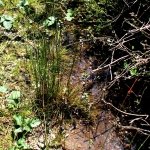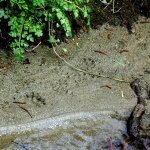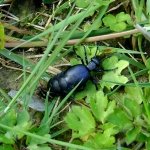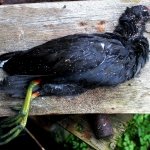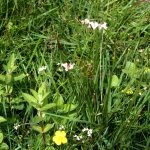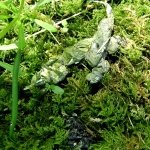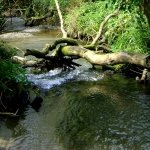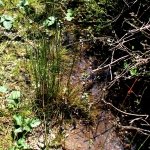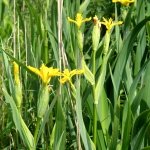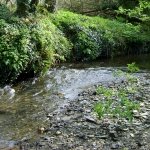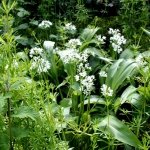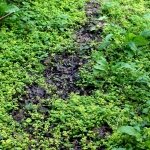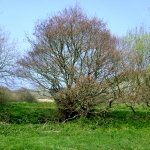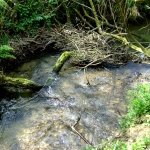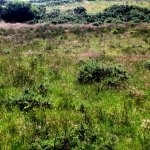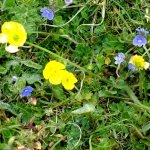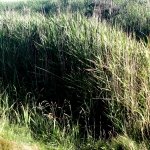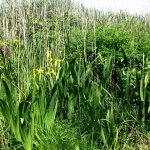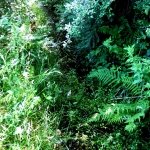WATER MEADOW
Farmed meadows in bottom of valleys become water logged in winter as rain water runs down the slopes. These fields provide open summer grazing. The streams in the valley occasionally flood and the water carves out the river banks, making pools. Mud is taken further down the valley giving nutrients to reed beds in the marshland. Trees give shade and reduce the wind around the meadows, their leaves rot down into the soil. Soil has collected in the meadows over hundreds of years so it’s deep and rich. The trees are mainly willow and alder, with black thorn and hawthorn and elder. The meadows are rich with wild flowers including comfrey, yellow rattle, buttercup, speedwell, meadow sweet, equisetum, Babington’s leek (a rare and protected plant) and saxifrage. In the sunny reeds and scrub there are reed warblers and the grasshopper warblers and cuckoos. Buzzards and sparrow hawks are also seen. Occasionally curlews can be found in the meadows here. In the stream there are trout and European eels (a rare and protected species). In the steep sides of the valley badgers have sets. Deer come down, from the sheltered woodland higher up the valley, to graze the grasses and wild flowers. The insect life is varied and includes dragonflies, damsel flies and May bugs.
Water Meadow food chain:
Sparrow Hawk
|
Pied wagtail
|
Damsel fly
|
Blood worms (in pools)


